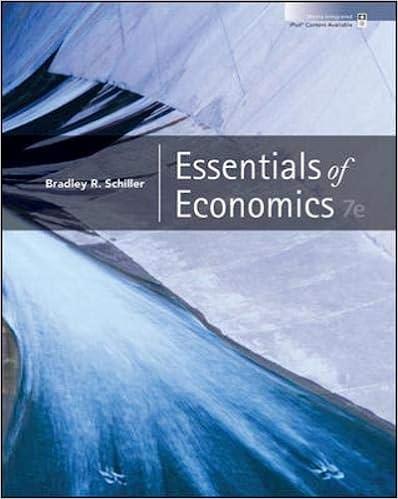Question
Remodeling your home: You want to hire a contractor to remodel your house. The value of the renovation to you depends on the contractor's effort
Remodeling your home:
You want to hire a contractor to remodel your house. The value of the renovation to you depends on the contractor's effort e, and is equal to P = 15 + 6(e + X), where the random variable X has mean zero and variance equal to V = 2.
You are risk-neutral and care only about the expectation final value of the house minus payment to the contractor, w. That is, your expected utility is uY = E[p - w].
The contractor has the coefficient of risk aversion r = 1 and his cost of effort is c(e) = e2/2. So, his expected utility from payment w and effort e is uC = E[w] - 1/2 * r * Var(w) - c(e).
The contractor has an outside option of working as a handyman for someone else instead of managing your renovation. The work as a handyman pays a fixed salary of U = 20 and it requires zero effort.
Questions
(a) First, assume that you can observe effort e. Solve for the optimal linear contract w = + e by first formulating and solving the contractor's problem of choosing effort e to maximize uC, and then formulating and solving your problem of choosing and to maximize uY . What is your expected utility from this optimal contract?
For the rest of the question, assume that e is not observable to you, but you can observe (and contract upon) e + X.
(b) Solve for the optimal linear contract w = + (e + X) by first formulating and solving the agent's problem of choosing effort e to maximize uC, and then formulating and solving your problem of choosing and to maximize uY . What is your expected utility from this optimal contract?
(c) Now, assume that the noise term equals X = Y + Z, where Y is the availability of parts and Z is the residual noise. Y and Z are random variables with mean zero and variance equal to Var(Y ) = 1 and Var(Z) = 1, and they are independent. Suppose Y is observable while Z is not observable. What is the optimal linear contract w = + (e + X - Y ) (i.e., what values of ,, and maximize your expected utility)? [Hint: Start with . What maximizes the total value of the contract?]
Step by Step Solution
There are 3 Steps involved in it
Step: 1

Get Instant Access to Expert-Tailored Solutions
See step-by-step solutions with expert insights and AI powered tools for academic success
Step: 2

Step: 3

Ace Your Homework with AI
Get the answers you need in no time with our AI-driven, step-by-step assistance
Get Started


